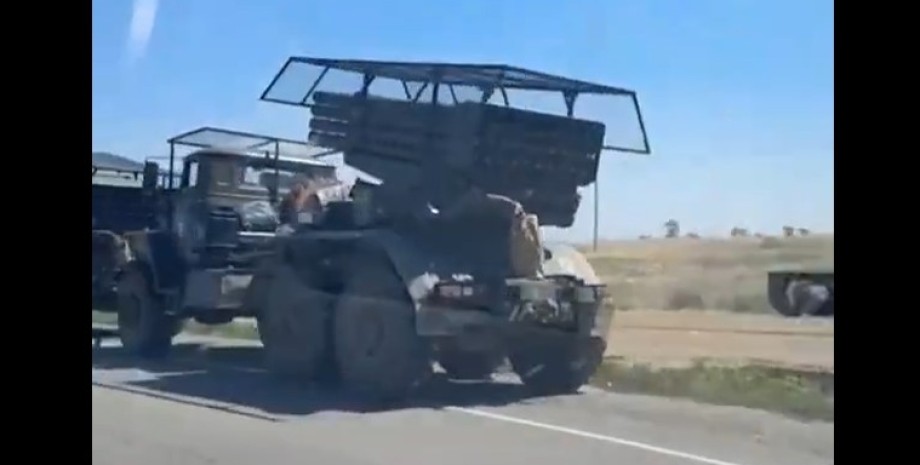
 By Eliza Popova
By Eliza Popova
According to the Polish edition of Defense 24 Adam Sitkovsky, these installations, 122 mm caliber are one of the most common in the Armed Forces of the Russian Federation, which are often lost on the battlefield. In his opinion, the equipment was returned or repaired after the fighting, and also received additional protection against drones. According to Oryx's analytical service, Russia has irreversibly lost about 210 such RSLS.
However, due to the presence of about 1700 starting installations in the reserve before the invasion of Ukraine, the Russian army has the opportunity to gradually replenish its losses. The Polish observer notes that despite the emergence of a modernized version of the 9K51m RSSU, called "Tornado-G", the process of their production does not allow the Russians to completely switch to new models, which forces them to continue the conversion of classical "hailsters".
The published footage shows that the column also contains a tanker truck on the chassis of the car of the KamAZ family. BM-21 "Grad" is a Soviet self-propelled multi-barrel reactive installation, developed in the early 1960s to replace the BM-14 system. The system consists of 40 launchers, divided into four rows of 10 pipes each, and is able to fire at a range of 20 to 45 km depending on the type of ammunition.
Starting installations can have mechanical or manual guidance, and the full volley time is only 20 seconds. On the asphalt road, the machine develops a maximum speed of 75 km/h, with the margin of the course 750 km. Later, the installation of the starting unit on the Ural-4320 chassis, also in the 6x6 configuration, began.










All rights reserved IN-Ukraine.info - 2022